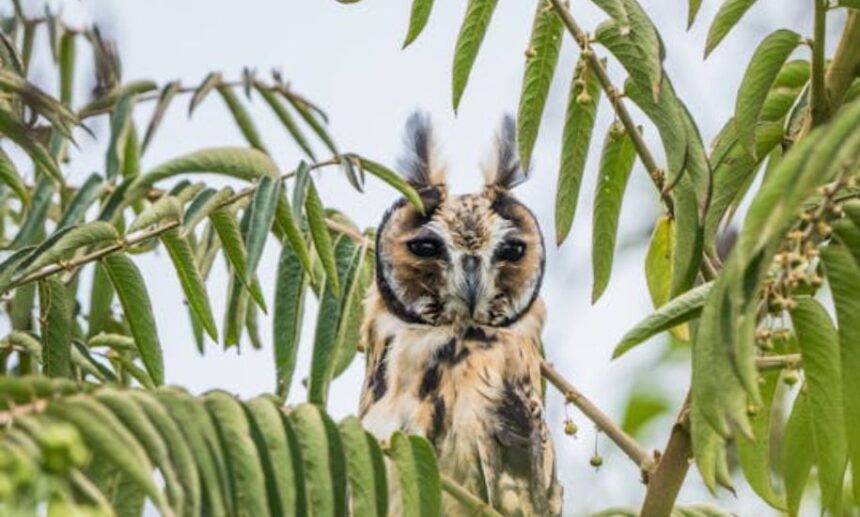The Hancock Bird has gained attention both as a symbolic creature and as a key species within bird conservation efforts. From its majestic flight to its cultural representations and role in environmental preservation, the Hancock Bird is far more than a name. Whether one speaks of its scientific presence or folklore implications, this bird represents freedom, vigilance, and transformation.
At the heart of awareness efforts is the work of conservationists like David Hancock, whose name has become synonymous with eagle preservation. To understand what makes the Hancock Bird significant, we must explore its classification, habitat, behavior, threats, and symbolic value. This article by Baddie Hun explores the full breadth of what the Hancock Bird represents—from feathers to folklore.
What is the Hancock Bird?
The term “Hancock Bird” often refers to the Bald Eagle, particularly in connection to the Hancock Wildlife Foundation, named after renowned Canadian biologist David Hancock. Though not a separate species, the Hancock Bird is viewed as a revered symbol of both North American avian majesty and organized conservation.
While “Hancock Bird” may not be found in a scientific journal as a unique species name, its cultural relevance is deeply rooted in its association with the bald eagle.
Full Scientific Name and Classification
Here is the scientific breakdown of the bird typically associated with the Hancock Bird name:
-
Common Name: Bald Eagle
-
Scientific Name: Haliaeetus leucocephalus
-
Class: Aves
-
Order: Accipitriformes
-
Family: Accipitridae
-
Genus: Haliaeetus
-
Species: leucocephalus
This bird of prey is native to North America and is easily identified by its white head, yellow beak, and fierce, piercing eyes. The Bald Eagle has become a focal point of North American heritage and a conservation symbol globally.
Habitat and Regional Significance
The Hancock Bird, i.e., Bald Eagle, thrives across a wide range of habitats throughout North America. It prefers regions close to open bodies of water—like rivers, lakes, marshes, and coastal areas—where fish are abundant.
Notably, it is often observed in Hancock County areas in states like Maine and Mississippi, where large bodies of water provide a suitable nesting and hunting environment. These birds often return to the same nest each year, which can grow to enormous sizes—up to 13 feet deep and weighing over a ton.
Appearance, Behavior, and Diet
Physical Appearance
The Hancock Bird or Bald Eagle is easily distinguished by:
-
White-feathered head and tail
-
Dark brown body and wings
-
Golden-yellow beak and talons
-
Wingspan reaching 6 to 8 feet
Behavioral Traits
Bald Eagles are known for:
-
Their soaring flight pattern, often riding thermal currents
-
Building enormous stick nests in tall trees or cliffs
-
Monogamous pair bonding and shared parenting of eaglets
Diet
The Hancock Bird is primarily carnivorous, with a diet composed mainly of:
-
Fish (especially salmon and trout)
-
Waterfowl
-
Small mammals
-
Carrion (opportunistically)
They are expert fishers, often seen swooping over lakes and rivers to pluck fish directly from the water with powerful talons.
Conservation Status and Threats
Once classified as endangered in the U.S., the Bald Eagle’s story is one of remarkable recovery.
Conservation Status:
-
IUCN Red List: Least Concern
-
US Fish & Wildlife: Delisted from endangered status in 2007
-
Population Trend: Increasing
Major Threats:
-
Habitat loss due to deforestation and development
-
Pollution and contamination (especially from pesticides like DDT)
-
Human disturbance during breeding seasons
-
Lead poisoning from bullets in scavenged carcasses
Organizations like the Hancock Wildlife Foundation have played a critical role in bringing the Bald Eagle back from the brink. Thanks to widespread awareness campaigns, live eagle cams, and habitat preservation, the Hancock Bird remains an inspiring conservation success.
Interesting Facts about the Hancock Bird
-
Lifespan: Up to 30 years in the wild; over 40 in captivity
-
Symbol of the USA: Adopted as the national emblem in 1782
-
Vision: Their eyesight is 4–5 times sharper than a human’s
-
Flight Speed: Can dive at speeds of up to 100 mph
-
Strength: Capable of lifting prey weighing several pounds
These qualities make the Hancock Bird not only a biological marvel but also a revered icon of power and perseverance.
Cultural and Symbolic Significance
In Native American culture, the eagle is considered a sacred messenger that carries prayers to the spiritual realm. The Hancock Bird is often used symbolically to denote:
-
Freedom and Independence
-
Spiritual Protection
-
Renewal and Courage
-
Power and Nobility
Its image is widely used in military insignia, government seals, and patriotic symbols, reinforcing its place in collective consciousness.
The Legacy of David Hancock
David Hancock is a biologist and conservationist whose life’s work gave the term “Hancock Bird” widespread recognition. As founder of the Hancock Wildlife Foundation, he pioneered using live webcams to monitor eagle nests, providing rare insight into eagle life and breeding behaviors.
His dedication helped transform the Bald Eagle from a threatened species into a conservation triumph. For many, the name “Hancock Bird” pays tribute to both the eagle and Hancock’s tireless advocacy.
Myth, Legend, and Local Stories
Stories about the Hancock Bird are shared in various communities, especially near eagle habitats. In parts of Hancock County, residents describe seeing the same eagle pair return every spring—believed by some to be guardians of the forest.
Other tales from indigenous cultures view the Hancock Bird as a reincarnation of wise ancestors, watching over the living. Its image in paintings, flags, and even tattoos speaks to its continuing role in folklore and identity.
Conclusion: A Bird Worth Celebrating
The Hancock Bird is more than just a reference to a raptor species—it is a powerful symbol, a conservation icon, and a part of North America’s ecological and cultural fabric. From its sharp talons to its mythic wings, this bird commands awe and respect.
Thanks to the efforts of people like David Hancock, the Hancock Bird soars freely today, a testament to what humans can achieve when we choose to protect rather than exploit.
In honoring this majestic creature, we not only preserve a species but also safeguard the wild essence of freedom itself.




